Tehran known as “the city of museums,” there is a plethora to choose from to understand Iran better from political, cultural, and historical viewpoints. This is the list of best museums in Tehran to visit in traveling Iran:
Golestan Palace
One of the oldest historic monuments in the city of Tehran, and of world heritage status
Saadabad Historical Complex
which belongs to four historical periods of Qajar, First and Second Pahlavi and after the Iranian Revolution
Niavaran Palace Complex
The complex traces its origin to a garden in the region of Niavaran, which was used as a summer residence by Fath-Ali Shah (1772–1834) of the Qajar Dynasty.
The National Jewelry Treasury
Immerse yourself in the world of luxury and splendor at The National Jewelry Treasury, which holds one of the finest collections of jewelry
National museum of Iran
Aging more than 70 years, containing 300,000 museum is the largest museum of History and Archaeology of the country.
Carpet Museum of Iran
Exhibits more than 100 pieces dating from the 17th century to the present day
Abgineh Museum
Pottery has been one of the major Iranian traditions from the past to the present. It is not surprising that this ancient art has left valuable precious remains throughout history.
Tehran Museum of Contemporary Art
Is among the largest art museums in Tehran and Iran. It has collections of more than 3,000 items that include 19th and 20th century’s world-class arts.
Azadi Tower Museum
Formerly known as the Shahyad Tower is a monument located on Azadi Square in Tehran, Iran. It is one of the landmarks of Tehran
Reza Abbasi Museum
is one of the richest historical-cultural collections of Iran which can be considered a small example of the Iran National Museum.
Negarestan Museum Garden
Negarestan palace or garden was founded by order of Fath Ali Shah, Qajar King. The garden was called “Negarestan” which means the place of paintings.
Iranian Art Museum Garden
The main attraction of the museum is about a dozen scaled-down replicas of well-known historical Iranian buildings dating to the early Pahlavi dynasty.
Address: Tehran, Panzdah-e-Khordad St. Arg Sqr.
Hours: Spring & Summer 09:30-18:30 , Autumn & Winter 09:00-17:00
Phone: +98 (0)21 3311 3335
UNESCO World Heritage Site inscription: 2013
Golestan Palace
One of the oldest historic monuments in the city of Tehran, and of world heritage status, the Golestan Palace belongs to a group of royal buildings and It consists of gardens, royal buildings, and collections of Iranian crafts and European presents from the 18th and 19th centuries. Golestan Palace is the result of roughly 400 years constructions and renovations.
A trip to Tehran remains incomplete without a visit to the Golestan Palace. There are several buildings here, among which are:
Marble Throne (Takht e Marmar)
This spectacular terrace, known as the Marble Throne, was built in 1806 by the order of Fath Ali Shah of the Qajar dynasty (r. 1797–1834). Adorned by paintings, marble-carvings, tile-work, stucco, mirrors, enamel, woodcarvings, and lattice windows, the throne embodies the finest of Iranian architecture. The Marble Throne is one of the oldest buildings of the historic arg.
Karim Khani Nook (Khalvat e Karim Khani)
Dating back to 1759, this building was a part of the interior residence of Karim Khan of the Zand dynasty
Pond House (Howz Khaneh)
The Pond House was used as a summer chamber during the Qajar era. Works of European painters presented to the Qajar court are housed at the Pond House.
Brilliant Hall (Talar e Brelian)
The Brilliant Hall was named so for it is adorned by the brilliant mirror work of Iranian artisans. The Brilliant Hall is famous for its mirror work and chandeliers. An oil painting by Yahya Khan.
Containers Hall (Talar e Zoruf)
All the chinaware that were dedicated to Qajar kings by the European kings were taken to this room and were arranged in show cases which were built for this purpose. Among the chinaware in this hall, these are the most exceptional:
- The chinaware that shows the Napoleonic Wars, dedicated by Napoleon Bonaparte.
- The chinaware dedicated by Nicholas I of Russia.
- The chinaware studded with gems and jewels, dedicated by Queen Victoria.
- The chinaware dedicated by Wilhelm II to the Iranian crown prince.
- A set made by malachite stone, dedicated by Alexander III of Russia.
Ivory Hall (Talar e Adj)
Ivory Hall is a large hall used as a dining room. It was decorated with some gifts presented to Nasser ed Din Shah by European monarchs.
Mirror Hall (Talar e Aineh)
The Mirror Hall is the most famous of the halls of the Golestan Palace. This relatively small hall is famous for its extraordinary mirror work.
Salam Hall (Talar e Salam)
The Salam (“Reception”) Hall was originally designed to be a museum. After the Sun Throne (Takht e Khorshid) was moved to the Royal Jewels Museum at the Central Bank of Iran, this hall was designated to hold special receptions in the presence of the king, hence the name Salam Hall.
Diamond Hall (Talar e Almas)
It is called Talar e Almas (“the Diamond Hall”) because of the exceptional mirror work inside the building. As the basic structure dates back to the time of Fath Ali Shah, it is only apt that this hall should be devoted to the exhibition of art and handicrafts from that period.
Building of Windcatchers (Emarat e Badgir)
The Building of Wind-catchers was constructed during the reign of Fath Ali Shah. It is flanked by two rooms known as Gushvar (“corner-like”). There is a central room which boasts the finest stained glass window in the Golestan Palace. Outside, there are four wind towers of blue, yellow and black glazed tiles and a golden cupola. The Wind-catchers are constructed to allow the cooling wind move through the structure.
Edifice of the Sun (Shams ol Emareh)
The Edifice of the Sun is considered the most stunning structure of the Golestan Palace. The idea of building a tall structure came to Nasser ed Din Shah who wanted a structure from which he could have panoramic views of the city.
The building has two identical towers. The exterior views have multiple arches, intricate tile work and ornate windows. This building’s two towers are in fact small versions of the Safavid viewing palace of Ali Qapu in Isfahan.
Museum of Gifts
Under the reign of Nasser ed Din Shah, this building was used as a warehouse for the chinaware and silverware which was dedicated to Qajar kings.
By time of the Pahlavi dynasty, this warehouse was turned into a museum to expose the rare gifts which were given to the Qajar kings.
Abyaz Palace
The Ottoman Sultan Abdul Hamid sent precious gifts to Nasser ed Din Shah, and reportedly, these gifts were copious and enough to fill a castle. The Qajar monarch decided to build an exhibit hall worthy of these gifts within the confines of the Golestan Palace, and eventually the Abyaz Palace was constructed.
Completed in 1883, the Abyaz (“White”) Palace now houses one of the most interesting ethological museums in Iran. It includes a colorful exhibition of traditional Iranian costumes (Anthropology museum), as well as a folk art exhibition.
Museum Hall
Nasser ed Din Shah was very impressed by the exhibition of artifacts and valuable objects at European museums during his second European tour around 1872. He arrived back in Tehran intent on building a museum hall to exhibit paintings, royal jewels, and other royal artifacts.
Photographic archive
There is an early photographic collection at the Golestan complex which includes photos which are mainly related to the time of the 19th-century progress of photography in Europe. It was created by the order of Naser ed Din Shah of the Qajar dynasty
Golestan Palace is also one of Tehran’s most famous places for photography and recording eye-catching Videos.
Address: Tehran, Shahid Kamal Taheri St, Shahid Fallahi Ave. (Zaferanieh), Valiasr St.
Hours: Spring & Summer 09:00-18:45 , Autumn & Winter 08:30-17:00
Phone: +98 (0)21 2794 0379
Saadabad Historical Complex
Sa’adabad palace, which belongs to four historical periods of Qajar, First and Second Pahlavi and after the Iranian Revolution, is located in one of the most pleasant areas of Tehran. The lush, tall trees and the atmospheric waters that flow through the corners of Sa’adabad make this palace one the must dos in travel to Iran. The complex includes more than 180 hectares and has 18 large and small museums, each once owned by a member of the royal family.
Mellat Palace (White Palace)
White Palace is the largest mansion in this complex. In addition to ceremonial and official affairs this building was used as a summer residence of Mohammad Reza Shah (the second king of Pahlavi dynasty) and the queen Farah.
The first king of Pahlavi, Reza Shah ordered to build this palace in 1932 which was completed by 1937. But it was effectively used three years later.
This building has 54 units including ten large ceremonial saloons which were the official reception hall of Mohammad Reza Pahlavi.
Fine Art Museum (The Black Palace)
One of the splendid buildings of Sadabad is the Fine Art Museum which was used as the royal court during 1968 – 1979.
In 1983 it was inaugurated as the “Fine Art Museum” which has attracted many art lovers.
This building is situated in southern part of Saad Abad and is a three story building covering an area of 3600 square meters.
There are numerous beautiful paintings with western and eastern styles on display for visitors.
Green Palace
Shahvand Palace which is now called Green Palace is one of the most beautiful palaces in Iran. Formerly this building belonged to someone called “AliKhan” who was one of the big land owners and later it was bought by Reza Shah.
During 1923-1929 Reza Shah renovated and redecorated this building by an architect called” Mirza Jafar Memar Bashi”.
The outside view is covered by rare pearl green stones from Zanjan province hence it was called Green Palace. This palace is a two story building in an area of 1203 square meters.
The most interesting part of this palace is the mirror hall with a made to measure carpet of seventy square meters, woven in the Amoughli carpet workshop in Mashhad.
Royal Costume Museum (Shams Pahlavi Palace)
This building belonged to Shams Pahlavi (Reza Shah`s daughter). It is a mixture of Iranian and European architecture. It was built by the order of Reza Shah during 1936-1940. Shams Pahlavi used this building as her summer residence, and then in 1964 she sold it to Mohammad Reza Pahlavi.
During 1964-1979 this palace was used as a private museum of Pahlavi dynasty and it housed numerous antiques and royal gifts.
After the revolution since 1995 till 2004 this place was used as the Anthropology Museum. Later in February 2010 it was converted to the museum of “Contemporary History and Royal Gifts of Pahlavi Dynasty”.
Royal clothes of Pahlavi family (the queen, Mohammad Reza Shah, Reza Shah and his family) are on exhibit inn this museum.
Master MirEmad Calligraphy Museum
Originally this building was the residence of Pahlavi`s children (Farahnaz and Ali Reza). It is a two storey building and its architecture belongs to late Qajar (1794-1925) and early Pahlavi era (1925-1979).
Since 1997, it was used as Calligraphy Museum of Master MirEmad, the most famous Calligrapher of Safavid dynasty (1501-1722).
There are Collections of selected works of famous calligraphers of Iran’s Islamic periods (from the 10th to 20th century AD) such as MirEmad, Mustasimi, Ahmad Neyrizi, Kalhor and etc.
Royal Albums and Historical Documents Museum
This center has been formed to show the documents of contemporary history (Pahlavi era) with a focus on Saadabad and its importance as the location of the Royal Court Building.
This exhibition includes some written and visual documents, albums, different seals and golden plaques, different types of envelopes, sheets and etc.
Master Behzad Museum
This building was built during Qajar era (1794-1925) and in the course of the first Pahlav, it was the residence and office of Reza Shah. Later, it was used as the summer residence of Reza Pahlavi in his childhood, this building was called “The Prince Palace”.
In 1994, with the donation of some works of Master Hossain Behzad to the Cultural Heritage Organization by his son at this great artist`s centennial birthday, this building was inaugurated as Master Behzad Museum.
Precious paintings by Master Behzad, who is one of the founders of contemporary painting and his ideas, opinions and works led to fundamental changes in the contemporary Iranian art, is displayed in this museum.
Military Museum
This building was built by the order of Reza Shah in 1939 and covers an area of 3000 square meters and is a two and half story building built for Tajol Molok, the second wife of Reza Shah and mother of the king Mohammad Reza Shah.
During 1973-1974 this building was renovated and was gifted to Shahram (Shah’s nephew) and hence called “Shahram’s Palace”.
In 1984 this building changed to the military museum and now it shows Military History of Iran and contains all sorts of weapons, uniforms, pictures, books and other related items.
Royal Weapons Museum
Originally this building was the residence of Mohammad Reza`s brother, Gholam Reza Pahlavi.
This collection contains more than 70 pieces of war weapons and numerous hunting rifles made in some of the famous manufacturers such as: Remington, Winchester, Spring Field and Brno. There are also some of the earlier weapons made by Iranian Royal army in this museum.
There are some gun powder leather bags remaining from Qajar era. One of the highlights of this museum is an outstanding front-loaded rifle with its gun hammer which belongs to 16th century which was made in India.
Royal Cars Museum
Royal cars, used by Pahlavi dynasty are on display in this exhibition. The cars such as: Mercedes Benz 600, Rolls Royce, Cadillac.
Royal Tableware Museum
This museum covers an area of 2600 square meters. This two-story building was built during 1937-1940 by the order of Reza Shah by a famous engineer called Farman Farmaniyan.
Originally this building was covered by carved stones, in 1972 on the order of Ashraf Pahlavi the building was expanded and renovated and its outside walls were covered by alabaster stones.
In 1994 this place was rearranged to be used as Plates Museum.
Royal Kitchen Museum
It was constructed during Pahlavi the second as the kitchen of the White Palace. In 1975, a German company was assigned to equip the kitchen with modern utensils.
Water Museum
This building which was built during the second Pahlavi was the special office of Mohammad Reza Shah that was used for reception of the Courtiers and clients. Later it was assigned to General Kasraee (Person in charge of Military Protection) and after Islamic Revolution of Iran, it changes to Water Museum.
This 2670 square meters building is located at the south east of Green Palace in Saadabad Complex and this museum is an exhibition of ancient and traditional techniques and instruments for water supplement and distribution. Various water-related structures such as water reservoirs and traditional ice houses are introduced here.
Some ancient water dams and royal orders concerning them are presented as well.
Master Farshchian Miniature Museum
This museum is located in the central part of SaadAbad, and it was built during Qajarian era. This building was the residence of Reza Shah and his fourth wife queen Esmat. During Mohammad Reza Pahlavi era, his brother and later his chief cook used to live here.
In the year 2002 this building was converted to Master Mahmood Farshchian Museum. It hosts fifty paintings of this outstanding artist in its five halls.
Omidvar Brothers Museum
This museum is located at the north west of Saadabad complex and was built during Qajar era.
This place was used as the residence of the king’s carriages drivers.
On the occasion of International Tourism Day, it was named after the first Iranian tourists called Omidvar brothers who traveled around the world. They started their journey with only 90 $ in 1954 and they were traveling for ten years.
Nations Art Museum
During 1967-1971 by the order of the queen Farah Pahlavi the basement of White Palace turned to a special art museum.
After the revolution in 1992 it was named Nations Art Museum. this place contains unique collection of art works from all over the world which have been either bought or gifted and they range from: pre-Islam civilization, Islamic era, parts of Africa, India, Far East, Malaya, and also contemporary arts of Iran and the rest of the world.
Address: Tehran, Niavaran St, Niavaran Square
Hours: Spring & Summer 09:00-18:00 , Autumn & Winter 08:00-17:00
Phone: +98 (0)21 2228 2012
Niavaran Palace Complex
The complex traces its origin to a garden in the region of Niavaran, which was used as a summer residence by Fath-Ali Shah (1772–1834) of the Qajar Dynasty.
A pavilion was built in the garden by the order of Naser ed Din Shah (1831–1896) of the same dynasty, which was initially referred to as Niavaran, and was later renamed Saheb Qaranie. The pavilion of Ahmad Shah Qajar (1898–1930) was built in the late Qajar period.
During the reign of the Pahlavi Dynasty, a new palace named Niavaran was built for the imperial family of Mohammad Reza Shah (1919–1980). The palace was designed in 1958 and completed in 1967. All of the peripheral buildings of the Saheb Qaranie, with the exception of the Ahmad Shahi Pavilion, were demolished, and the present-day structures were built to the north of the Saheb Qaranie. The Ahmad Shahi Pavilion was then used as an exhibition.
Sahebqaraniyeh Palace (Sahebgharanieh Palace)
Closed for renovations until 2018 this Qajar period building in the Niyavaran Cultural Historic Complex was once Nasser-al Din Shah’s harem before later being transformed into Mohammad Reza Shah’s office. It contains a fine collection of paintings and other furnishings, including several colourful Qajar-era works.
Niavaran Palace
Niavaran palace was designed as a place for welcome of the royal and high-ranking guests of the court but it was allocated to the place of accommodation of Mohammad Reza Pahlavi and his family through some changes during its construction.
Mohsen Foroughi has designed this building inspired by the Iranian architecture and combination of art styles of before and after Islam. This palace has two main floors and a half floor in the middle of them in a modern style. This palace was conquered by the revolutionary forces in 1357
Koushk Ahmad Shahi (Ahmad Shahi Pavilion)
Ahmad Shahi Pavilion is beside Mohammad Reza Pahlavi’s dwelling, Niavaran Palace. The Pavilion was built at the end of the Qajar era as Ahmad Shah’s dwelling among Niavaran garden.
The Ahmad Shahi pavilion, after refurbishment and interior additions, was utilized as the house and workplace of Reza Pahlavi by wholly altering its furniture during the Mohammad Reza Pahlavi.
Jahan Nama Museum
Two rooms here are filled with a small but well-displayed example of the eclectic collection of modern and ancient art gathered by Farah Diba, mainly during the 1970s. Works by Warhol, Picasso and Joan Miró share space with Iranian archaeological artefacts and finds from sites in Mexico and Egypt, and rotating exhibits of contemporary Iranian art.
Private Library
Private library of the Niavaran Palace Complex is a historical complex remaining from the Qajar and Pahlavi periods. The library was established by Empress Farah and consists of about 23,000 books, mostly in the Persian and French languages, and specializes in books related to philosophy.
Shah Exclusive Cars Museum
Formerly used as a garage, the vintage car museum of Tehran’s Niavaran Palace houses the Pahlavi family’s private cars, small motorcycles owned by their children, and some car replicas.
The most beautiful cars on display are two Rolls-Royce dating back to the second Pahlavi era.
Address: Tehran, Ferdowsi Avenue Central Bank of I.R. Iran
Hours: Sat-Tue 14:00-16:00
Phone: +98 (0)21 6446 4700
The National Jewelry Treasury
Immerse yourself in the world of luxury and splendor at The National Jewelry Treasury, which holds one of the finest collections of jewelry once worn and used by members of Persian royal dynasties. Don’t miss the highlights of the collection: the Sea of Light Diamond (Darya-ye Noor), the world’s largest pink diamonds, the diamonds of Noor al-Ain, the Crown of Kiani, Nadir’s Throne, the Peacock’s Throne, the yellow, black and red diamonds, the world’s largest pearl and many more.
Address: Tehran, 30 Tir Ave, Imam Khomeini Ave.
Hours: Spring & Summer 09:00-19:00 , Autumn & Winter 09:00-17:00
Phone: +98 (0)21 6670 2061
National Museum of Iran
National Museum of Iran, aging more than 70 years, containing 300,000 museum objects in an area more than 20,000 square meters, is not only the largest museum of History and Archaeology of the country, but ranks as one of the few most prestigious museums of the world in regard to grand volume, diversity and quality of its huge monuments. In the Iranian museum tradition it is considered Iran’s mother museum, aiming at preserving relics of the past to hand down to the next generations, enhancing better understanding among world peoples and nations, discovering and showing Iranian’s roles in shaping world culture and civilization and trying to enhance public knowledge.
Museum of Ancient Iran
is the first Iranian museum. A French architect, named André Godard, started the construction of the museum on May 11, 1934 by the order of Reza Shah. The facade and the entrance of the museum were both made in the same style of Taq Kasra. Taq Kasra was a palace in Ctesiphon, the capital of the Sasanian Empire.
This museum proudly celebrates the rich heritage of Iran with a spectacular collection of sculptures, ceramics and seals that date back to the 4th and 5th centuries BC.
Museum of the Islamic Era
this museum offers a stunning collection of arts and antiquities from throughout the Islamic period, including calligraphy, carpets, ceramics, woodcarving, sculpture, miniatures, brickwork and textiles.
Address: Tehran, Dr. Fatemi St. Beside Laleh Park
Hours: Spring & Summer 09:00-18:00 , Autumn & Winter 09:00-17:00 Exc. Monday
Phone: +98 (0)21 8897 7903
Carpet Museum of Iran
Beside Laleh Park, and founded in 1976, the Carpet Museum of Iran exhibits more than 100 pieces dating from the 17th century to the present day, this is a great place to see the full range of regional patterns and styles found in Iran.
One of the most important part of the museum is the display of carpets that depict the stories of the Shahnameh in their contexts.
Address: Tehran, 30th Tir St.
Hours: Spring & Summer 09:00-19:00 , Autumn & Winter 09:00-17:00 Exc. Monday
Phone: +98 (0)21 6670 8153
Abgineh Museum; The Glassware and Ceramic Museum of Iran
Pottery has been one of the major Iranian traditions from the past to the present. It is not surprising that this ancient art has left valuable precious remains throughout history.
Abgineh Museum is one of the capital’s most visited museums, housed in a unique Qajar mansion, built by Qavam al-Saltanah and used to hold political meetings in the country. It was private residence of longtime Prime Minister Ahmad Qavam from 1921 until 1951. The complex was also Embassy of Egypt for seven years.
The combination of Iranian and Western architecture in this octagonal building from the beginning shows you the beauty. The masonry, plastering, paving and carving of the mansion, along with its contemporary decoration, has created a unique, yet new, historic space.
Address: Tehran, N Karegar St.
Hours: Sat-Thu 10:00-19:00 , Fridays: 15:00-19:00
Phone: +98 (0)21 8898 9374
Tehran Museum of Contemporary Art
Tehran Museum of Contemporary Art, also known as TMoCA, is among the largest art museums in Tehran and Iran. It has collections of more than 3,000 items that include 19th and 20th century’s world-class European and American paintings, prints, drawings and sculptures. TMoCA also has one of the greatest collections of Iranian modern and contemporary art.
TMoCA is considered to have the most valuable collections of modern Western masterpieces outside Europe and North America. This museum’s impressive collection boasts work by Picasso, Matisse, Van Gogh, Miró, Dalí, Bacon, Pollock, Monet, Munch, Moore and Warhol.
Address: Tehran, Azadi Sq.
Hours: Sun-Thu 09:00-17:00 , Fridays: 10:00-17:00, Closed on Saturdays
Phone: +98 (0)21 6606 4121
Azadi Tower Museum
The Azadi Tower (“Freedom Tower”), formerly known as the Shahyad Tower is a monument located on Azadi Square in Tehran, Iran. It is one of the landmarks of Tehran, marking the west entrance to the city, and is part of the Azadi Cultural Complex, which also includes an underground museum.
The Azadi Museum is located at the basement level. Inside are austere black walls of dignified proportions. A concrete mesh forms the ceiling. Heavy doors open onto a crypt with subdued lighting from showcases, each containing an object. The museum houses a number of gold and enamel pieces, painted pottery, marble and paintings. Approximately fifty pieces have been selected, each representing a particular period in Iran’s history.
Address: Tehran, No. 892, Shariati St.
Hours: Spring & Summer 09:00-19:00 , Autumn & Winter 09:00-17:00 Exc. Monday
Phone: +98 (0)21 8851 3002
Reza Abbasi Museum
Reza Abbasi Museum is one of the richest historical-cultural collections of Iran which can be considered a small example of the Iran National Museum. The museum’s spectacular collections date from the second millennium BC to the early 20th century and the Qajar period. The museum is named after the renowned Safavid painter of Kashan, Reza Abbasi.
Address: Tehran, Shariatmadar Rafi St, Daneshsara St, Baharestan Sq
Hours: Spring & Summer 09:00-18:00 , Autumn & Winter 09:00-17:00 Exc. Monday
Phone: +98 (0)21 3311 6693
Negarestan Museum Garden
Negarestan palace or garden was founded by order of Fath Ali Shah, Qajar King, at 1843-1849 as a summering place out of capital.
For presence of paintings and various depictions of king and his courtiers in various buildings, the garden was called “Negarestan” which means the place of paintings.
There were several halls and mansions in this garden such as Delgosha Mansion, Salam and Ghalamdan Halls.
Museum of Kamal-ol Molk School
In this museum which surveys the school of Kamal-ol Molk (Mohammad Qaffari), paintings of the master together with the works of two generations of his students have been put on display. The museum also demonstrates documents relating to the school for fine industries.
Monir Museum
Is home to valued works of the remarkable Iranian artist: Monir Shahroudy Farmanfarmaian.
Through simplicity and attention to detail along with lighting, mirror works and the enchanting shine/sparkle they create, it seems that the space itself is an art creation giving us a chance to experience, wonder, sense and discover in-between the tremendous striking splendors.
Address: Tehran, Dr. Hesabi St, Fayyazi Ave, Valiasr St.
Hours: Tue-Sun 09:00-19:00
Phone: +98 (0)21 2268 6064
Iranian Art Museum Garden
The Iranian Art Museum Garden is an art museum located in the Elahieh district of Tehran. The main attraction of the museum is about a dozen scaled-down replicas of well-known historical Iranian buildings dating to the early Pahlavi dynasty.
The main building was built in 1931 and belonged to Ahmad Amir Ahmadi, the lieutenant general of Reza Shah, and then to his wife, Turan Mohajer Eslami.
During the Pahlavi dynasty’s reign in the 1960s, for the festival named “the 2500th anniversary of the Persian Empire”, models of some of the most famous historical Iranian buildings were ordered from Italian artisans. The models were constructed of concrete, with resin and polyester used to decorate their windows. Oil paints were used for painting the models of the Hasht Behesht, Chehel Sotoon and Shams-ol-Emareh buildings.
These models of Iranian historical monuments further include Hasht Behesht, Chehel Sotoon, Gonbad-e Ghabus, Shams-ol-Emareh, thirty-three Bridges of Isfahan, Mahyar Caravansary, Fin garden of Kashan, Azadi tower, Milad tower, Tomb of Danial, Soltanieh Dome, and St. Thaddeus Monastery.
The museum garden has included a painting exhibit, movies department, arts workshop, cultural products store, and an exhibit of Iranian sculptors’ works.
Address: Tehran, After Sheikh Hadi, Next to Mellat Bank
Hours: Tue-Sun 09:00-17:00
Phone: +98 (0)21 6646 3144
Moghadam Museum
Address: Tehran, Baharestan St.
Hours: Sun-Fri 09:00-20:00
Phone: +98 (0)21 3399 2012
Masoudieh Palace
Address: Tehran, Ministry of Culture and Islamic Guidance building, Kamal-ol-molk St, Baharestan Sq.
Hours: Sat-Wed 08:00-16:00
Phone: +98 (0)21 3396 6149
Iran National Art Museum
Address: Tehran, Sardar-e-Bagh-e-Melli, Sepah St. (Imam Khomeini)
Hours: Sat-Wed 08:00-16:00
Phone: +98 (0)21 6670 9132
Post and Communications Museum
Address: Tehran, Ferdowsi St.
Hours: Sat-Wed 13:00-17:00
Phone: +98 (0)21 6099 4033
Iran Melli Bank Museum
Address: Tehran, Namazi alley, Takhti Sq, Tajrish Sq.
Hours: Spring & Summer 10:00-18:00 , Autumn & Winter 10:00-17:00 Exc. Saturdays
Phone: +98 (0)21 2223 1708
Tehran Music Museum
Address: Tehran, Sarv St. Haqqani exp. Vanak sq.
Hours: 10:00-21:00
Phone: +98 (0)21 8865 7026
Islamic Revolution & Holy Defense Museum
Address: Tehran, Forsat St, Taleghani Ave.
Hours: 08:00-17:00
Phone: +98 (0)21 8830 6827
Tehran Martyrs Museum
Address: Tehran, North Gate, City Park (Park e Shahr)، Fayyazbakhsh St.
Hours: Sat-Wed 09:00-12:30pm – 14:30-17:00
Phone: +98 (0)21 6675 6945
Tehran Peace Museum
Address: Tehran, No. 1727, Taleghani St.
Hours: Sat-Wed 08:30-11:30pm – 13:00-17:30
Phone: +98 (0)21 6670 1915
U.S. Den of Espionage Museum (13 Aban)
Address: Tehran, Police Sq.
Hours: Sat-Wed 08:30-14:30pm – Thu 08:30-13:30
Phone: +98 (0)21 8843 7393
Museum of the Qasr Prison
Address: Tehran, Yarjani St. Imam Khomeini Sq.
Hours: Spring & Summer 09:00-13:00 & 14:00-17:00
Autumn & Winter 09:00-12:00 & 13:00-16:00
Phone: +98 (0)21 6672 2096
Iran Ebrat Museum
Address: Tehran, General Fallahi (Zaferaniyeh), Valiasr St.
Hours: 10:00-18:00
Phone: +98 (0)21 2241 7337
Time Museum of Tehran
Address: Tehran, Sardar-e-Bagh-e-Melli, Sepah St. (Imam Khomeini)
Hours: Sat-Thu 08:30-16:30
Phone: +98 (0)21 6672 6613
Malek National Library and Museum
Address: Tehran, No. 90, Zahir-ol-Eslam St, Baharestan Sq.
Hours: Sat-Wed 08:30-14:00
Phone: +98 (0)21 3311 1246
Professor Saba Museum
Address: Tehran, Javidi St, Amir Kabir St.
Hours: Sun-Fri 10:00-18:00
Phone: +98 (0)21 3350 5004
Home Museum of Modarres
Address: Tehran, South Felestin St.
Hours: Temporarily closed
Phone: +98 (0)21 0000 0000
Marble Palace (Marmar)
Address: Tehran, Moniriyeh Sq. Valiasr St.
Hours: Sun-Fri 09:00-17:00
Phone: +98 (0)935 339 6195
Valiasr Street Museum (Minaie House)
Address: Tehran, Km4 Tehran Karaj Highway
Hours: 09:00-15:00
Phone: +98 (0)21 6607 8066
Tehran Aerospace Exhibition Center
Address: Tehran, 25th St, Lashkari Exp.
Hours: 08:00-20:00
Phone: +98 (0)21 4452 5892
National Car Museum of Iran
Address: Tehran, 16th St. N Karegar Ave.
Hours: Sat-Wed 08:00-15:00
Phone: +98 (0)21 8835 1517
National Museum of Medical Sciences History (TUMS)
Address: Tehran, Tabandeh St. Piroozi Ave.
Hours: Sat-Wed 08:00-15:00
Phone: +98 (0)21 2381 2612
Iranian Electrical Industry Museum
Address: Tehran, Ferdows Garden, Valiasr Ave.
Hours: Spring & Summer 09:00-19:00 & Fridays 11:00-19:00
Autumn & Winter 09:00-17:00 & Fridays 14:00-17:00
Phone: +98 (0)21 2270 5005
Cinema Museum of Iran
Address: Tehran, N Saadi St, Darwazeh Dolat
Hours: Thu-Fri 11:00-18:00
Phone: +98 (0)936 034 4672
Museum of Iranian dolls and culture
Address: Tehran, Daarabad
Hours: Spring & Summer 08:00-20:00
Autumn & Winter 08:00-18:00
Phone: +98 (0)21 2229 0002
Iran Nature and Wildlife Museum
Address: Tehran, Imam Khomeini St.
Hours: Sat-Wed 09:00-16:00
Phone: +98 (0)21 6649 0864
Tehran Quran Museum
Address: Tehran, Hedayat St, Saadi St.
Hours: 09:00-16:00 Exc. Mondays
Phone: +98 (0)21 7752 6777
Tehran Under Glass Painting Museum
Address: Tehran, Imam Khomeini Sq.
Hours: Sat-Wed 09:00-14:00 & Thu 09:00-13:00
Phone: +98 (0)21 6674 8060
Sepah Bank Museum
Address: Tehran, Imam Khomeini Sq.
Hours: Sat-Wed 09:00-14:00
Phone: +98 (0)21 6671 6450
Tejarat Bank Museum
Address: Tehran, Aqdasiyeh, Imam Ali Exp.
Hours: Sat-Wed 09:00-14:30
Phone: +98 (0)21 8416 9109
Tehran Map Museum
Address: Tehran, St Marry Armenian Church, Jomhouri Ave.
Hours: Mon-Sat 09:00-17:00
Phone: +98 (0)21 6676 0879
Museum of Anthropology Armenians (Artak Manukian)
Address: Tehran, Zomorrodiyan St, Pasadaran Ave.
Hours: 09:00-15:00
Phone: +98 (0)21 2284 9775
Rasam Arabzadeh Carpet Museum

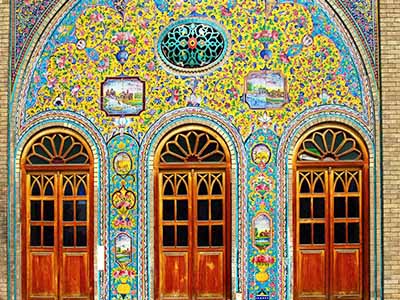
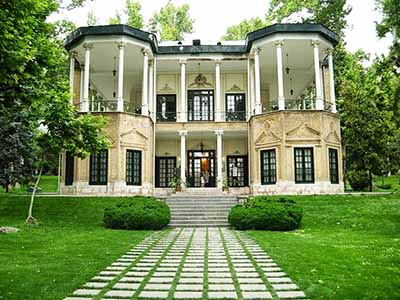
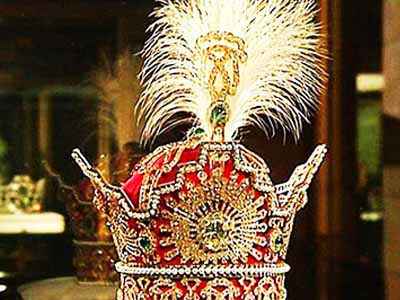
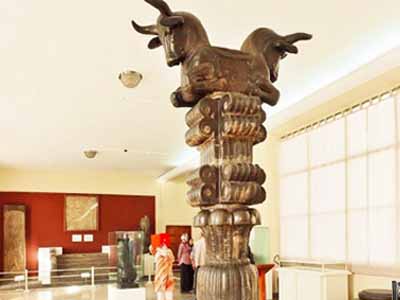
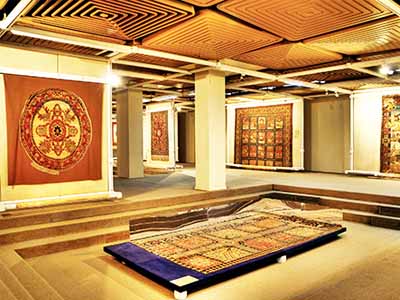
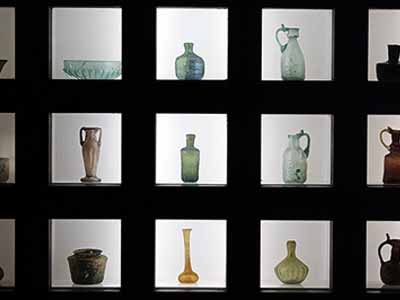
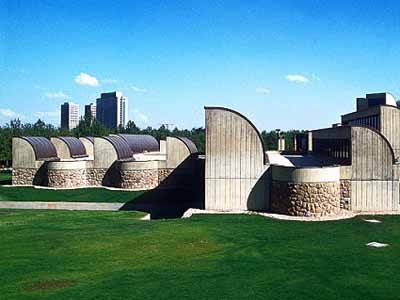
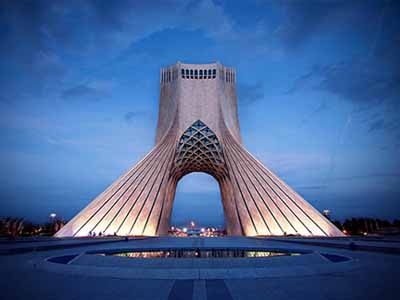
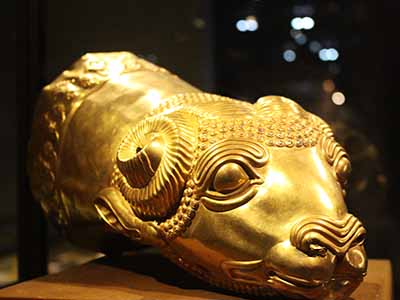
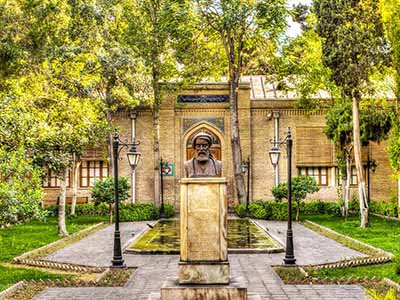
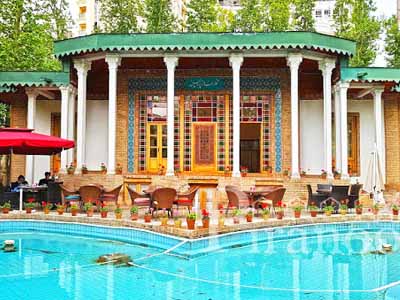
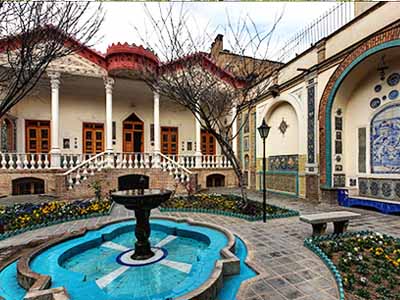
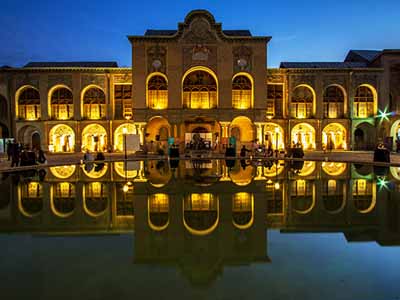
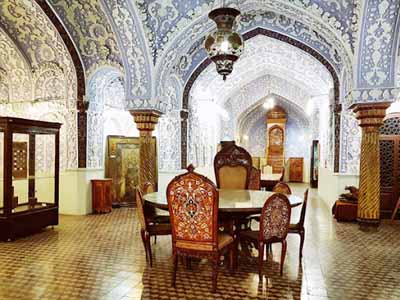
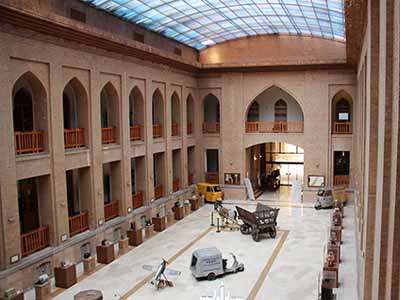
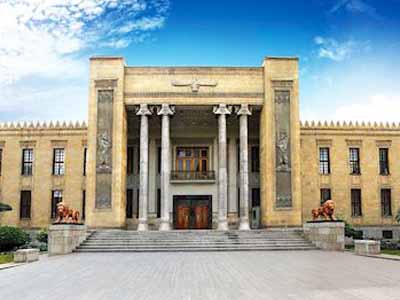
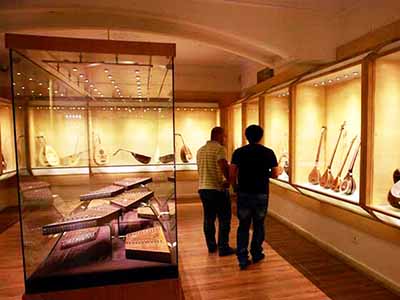
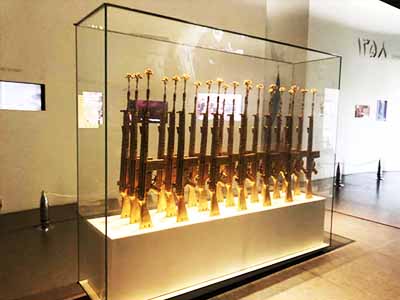
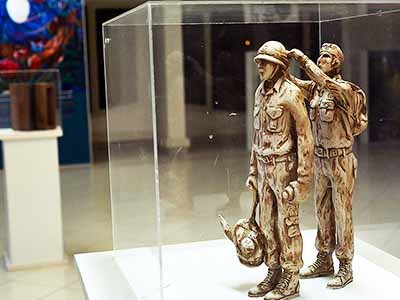
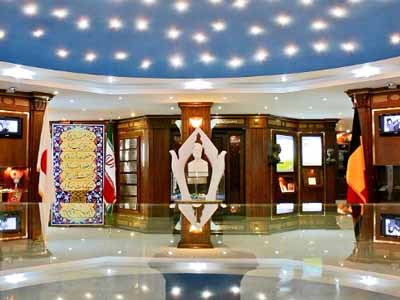
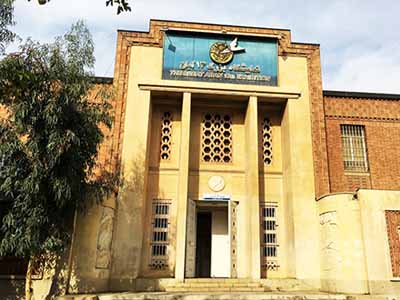
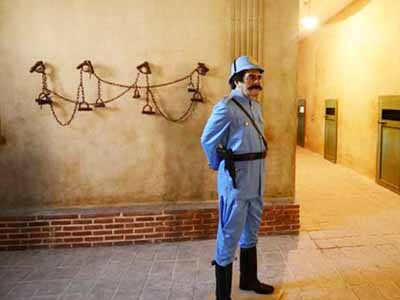
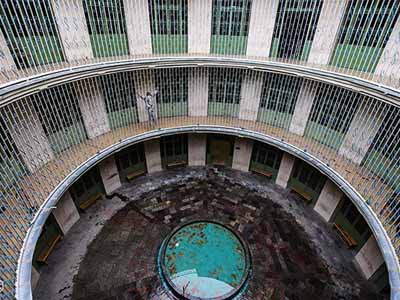
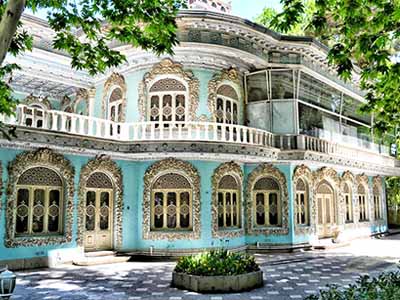
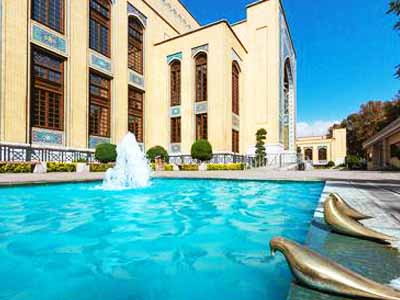
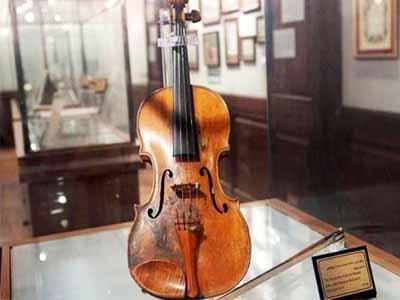
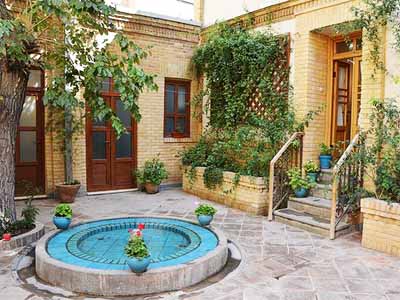
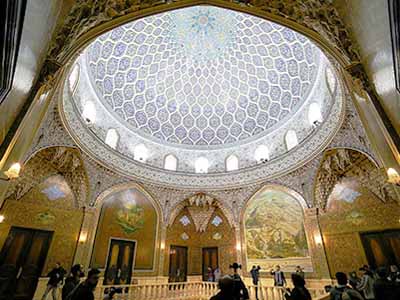
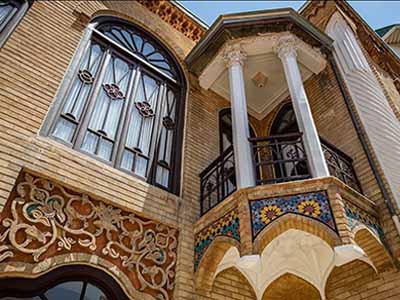
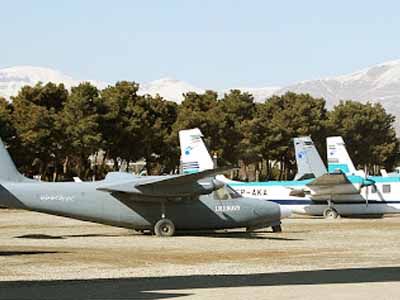
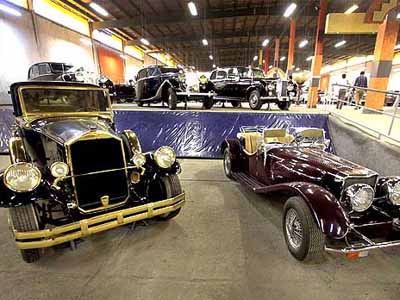
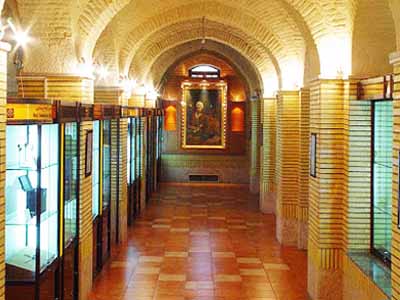
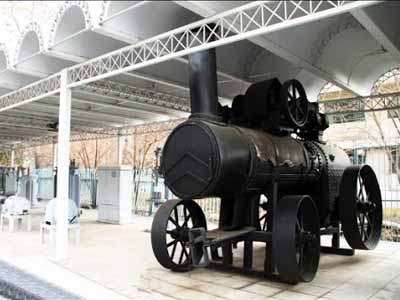
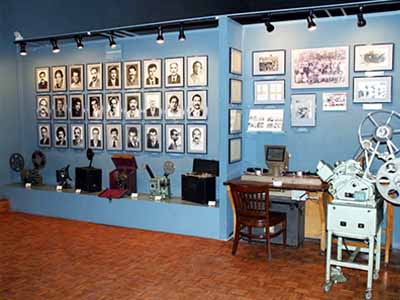
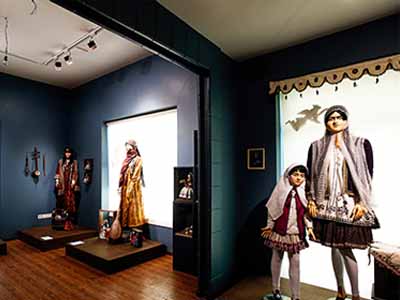
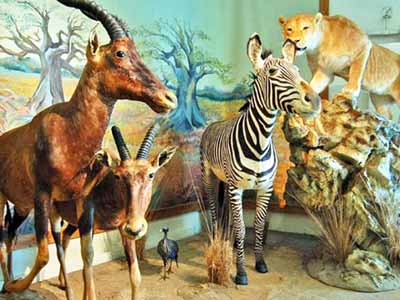
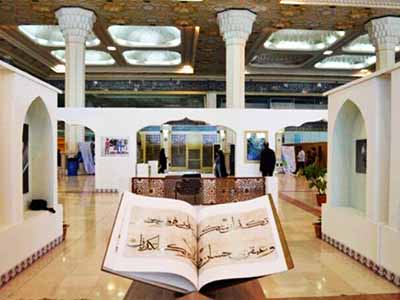
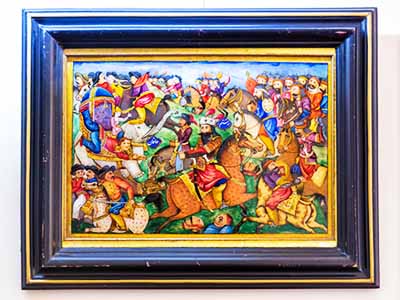
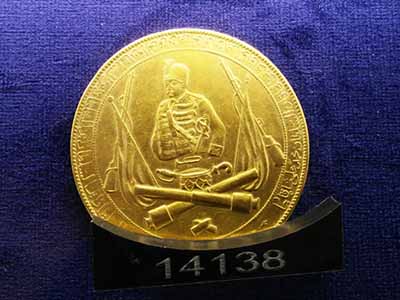
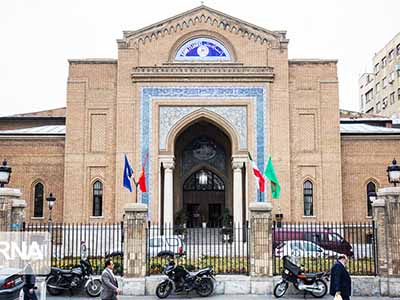
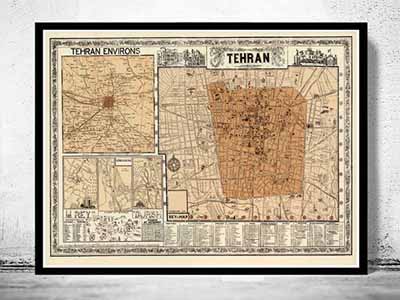
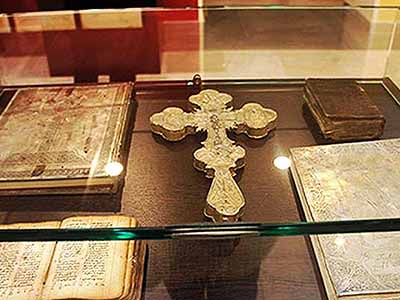
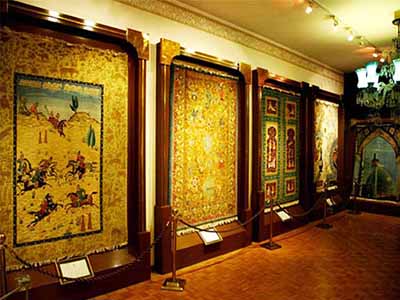
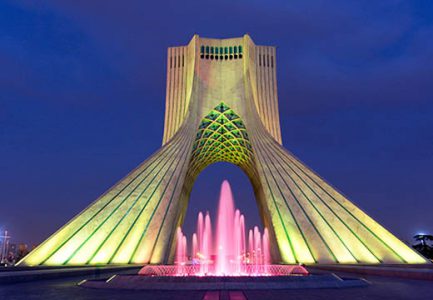
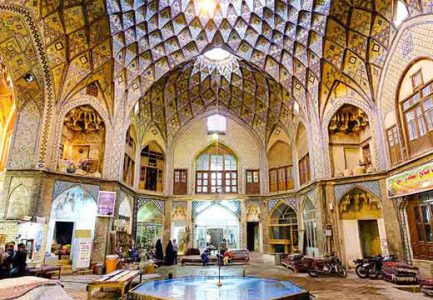
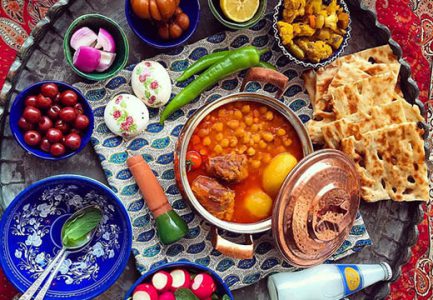
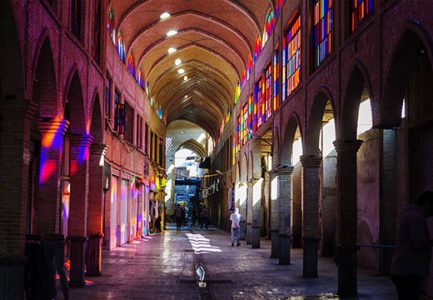
 WhatsApp us
WhatsApp us